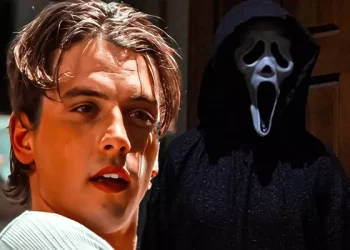Disney, a global entertainment powerhouse known for its family-friendly content, has a storied history of producing beloved animated classics and live-action films. However, amidst their vast catalog of films, there have been instances where certain productions were either banned, shelved, or significantly altered due to their darker and more horrifying themes. This article aims to explore and shed light on some of the Disney horror movies that faced censorship, bans, or significant restrictions, prompting questions such as “What are the banned Disney horror movies?”
Song of the South: A Controversial Tale
One of Disney’s most infamous banned movies is “Song of the South,” a blend of live-action and animation released in 1946. The film, set in the post-Civil War era, has faced criticism and controversy for its portrayal of African American stereotypes. Although not a traditional horror movie, the racial stereotypes and insensitive depiction of characters led to its banning from theatrical release in the United States.
The Black Cauldron: A Dark Departure
“The Black Cauldron” is often cited as Disney’s foray into darker, more mature themes. Released in 1985, this animated fantasy film is based on Lloyd Alexander’s book series. Its grim and eerie tone, involving dark magic, a malevolent horned king, and intense scenes, resulted in initial poor reception and a lackluster box office performance. While not officially banned, its darker themes and reception led to Disney distancing itself from the film and avoiding its re-release for an extended period.
See Also: Will There Be a Toy Story 5?
The Watcher in the Woods: Supernatural Chills
In 1980, Disney ventured into the horror genre with “The Watcher in the Woods.” This supernatural thriller, involving eerie occurrences surrounding a teenage girl and her family, was initially deemed too intense for younger audiences. The studio, after its initial release, re-edited the film multiple times due to its scary elements, resulting in several altered versions. While not outright banned, the film’s troubled production and the multiple edits made it challenging to find a stable release version for years.
Return to Oz: A Disturbing Adaptation
“Return to Oz,” released in 1985, offered a darker take on L. Frank Baum’s beloved “Oz” stories. This sequel to “The Wizard of Oz” had a notably more ominous tone, featuring disturbing imagery and themes, such as the Wheelers, a witch who removed heads, and the eerie asylum. The film’s departure from the lightheartedness of its predecessor led to concerns about its suitability for younger audiences. Despite not being officially banned, the film’s unsettling nature made it less marketable to Disney’s usual demographic.
Gore and Horror in ‘Pirates of the Caribbean’
While not strictly horror films, the “Pirates of the Caribbean” franchise, known for its swashbuckling adventures, incorporates elements of horror and the supernatural. However, some scenes in the franchise, particularly those involving gore, violence, and horror elements, led to parental concerns and debates about their appropriateness for younger viewers. Disney faced challenges in balancing the darker themes with the franchise’s family-friendly image, leading to discussions about toning down certain aspects in subsequent installments.
Censorship and Banning of ‘Cannibal Holocaust’
One of the most extreme instances of Disney’s involvement in a banned horror movie is linked indirectly to the film “Cannibal Holocaust.” While Disney itself didn’t produce or distribute this controversial movie, its subsidiary, Buena Vista Distribution, briefly held the rights to it in the 1980s. The film, known for its graphic violence, sexual assault scenes, and animal cruelty, faced widespread censorship and bans in numerous countries. Disney swiftly distanced itself from the film, causing further restrictions and controversies surrounding its distribution.
Conclusion
The question of “What are the banned Disney horror movies?” unearths a few instances where Disney, a company renowned for family-friendly entertainment, delved into darker, more mature themes. Films like “Song of the South,” “The Black Cauldron,” “The Watcher in the Woods,” “Return to Oz,” and even certain aspects of the “Pirates of the Caribbean” franchise have encountered censorship, bans, or significant alterations due to their eerie, intense, or controversial content. While Disney primarily focuses on wholesome storytelling, these instances stand as reminders of the complexities and challenges faced when exploring darker themes within its vast entertainment empire.
























